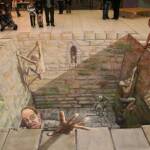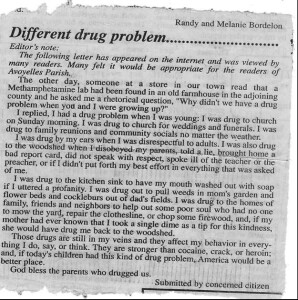[Abstract]
The purpose of this document is to discuss three elements of the United States justice system and how they relate to a forensics investigator. This document is intended for anybody looking to gain a basic understanding or knowledge of how the justice system applies to forensic investigators.
[Content]
Since the advent of the Internet there has been a lot more cyber crimes being committed in which digital forensic investigators need to analyze evidence and be able to present it in a way that adheres to the law and allows for a conviction. The law affects forensic investigators in many different ways, whether it be the way that evidence is collected, what types of evidence are allowed to be collected, the way a premises is searched, or even the way evidence is presented in a court of law. No matter how the law affects a forensic investigator it is the investigators job to be able to gather evidence in a manner that is well within the scope of the law.
The U.S. Constitution’s 4th Amendment identifies that a person, their home, papers, or effects shall not be searched without permission, unless there is reasonable cause to do so (Findlaw, 2009). This means that forensic investigators can’t go around being forensic vigilante’s searching other people’s residence for evidence to use against them…unless there is probable cause to and/or permission has been granted. This Amendment also states that if evidence is in plain view that it is admissible in court. This affects forensic investigators because forensic investigators can’t go search other people’s residence and belongings without a warrant or if there is probable cause. If forensic investigators were at the residence for some other reason other than looking for evidence, but they happened to see some evidence that was in plain view, then that evidence would be allowed in a court of law. The U.S. Constitution’s 4th Amendment protects people from unauthorized searches unless a court issues a warrant because there is probable cause.
The U.S. PATRIOT Act affects forensic investigators because the Act states that if somebody is a suspect of either domestic or foreign terrorism, then it is authorized to search and gather evidence against the suspect (107th Congress, 2001). This Act has been debate of much controversy because people argue that this act allows for the infringement of people’s civil liberties. The Act is intended to allow officials the ability to search and gather evidence either by electronic surveillance or other means in order to protect the country from foreign or domestic terrorists. The Patriot Act can affect forensic investigators by a government agency or offices may use the services of investigators to gather evidence against suspected terrorists. The Patriot Act can also affect forensic investigators because the Patriot Act is not authorized to conduct a search if it interferes with a previous ongoing investigation. The U.S. PATRIOT Act of 2001 enables government agencies to use the services of forensic investigators to gather evidence against suspected terrorists as long as it doesn’t interfere with any other investigations.
Forensic investigators need to know the U.S. Statutory laws and how these laws affect them. The U.S. Statutory laws consist of three different statues the Wiretap Act, Pen Registers and Trap and Trace Devices Statute, and the Stored Wired and Electronic Communication Act (US-CERT, 2008). If forensic investigators do not comply any of these statues with the result could be a stiff fine or imprisonment. By forensic investigators not knowing the laws it could greatly affect a criminal investigation and could put the investigator in jail for failure to comply with the law.
In conclusion, forensic investigators provide a bridge for gathering evidence from different types of technologies and presenting them before the U.S. Judicial system. In order for forensic investigators to successfully complete their job, they need to know the laws and how to operate within the limitations of the laws; otherwise they could end up in prison. Forensic investigators are not allowed to arbitrarily search people’s home, documents, or other belongings without permission or unless there is reasonable cause. Forensic investigator services may be allowed to search for evidence of a person who is either a foreign or domestic terrorist as long as it doesn’t interfere with any other government investigations.
References
1. FindLaw: U.S. Constitution: Fourth Amendment: Annotations pg. 1 of 6. Retrieved April 26, 2009, from FindLaw: U.S. Constitution: Fourth Amendment: Annotations pg. 1 of 6 Web site: http://caselaw.lp.findlaw.com/data/constitution/amendment04/01.html#1
2. Public Law 107-56 107th Congress. Retrieved April 26, 2009, from Public Law 107-56 107th Congress Web site:
3. (2008). Computer Forensics. Computer Forensics, Retrieved April 26th, 2009, from http://www.us-cert.gov/reading_room/forensics.pdf























































